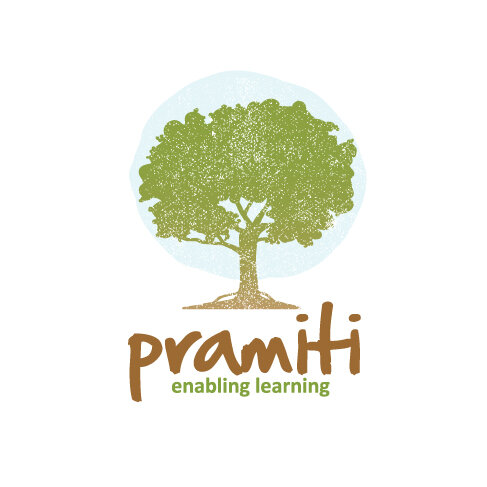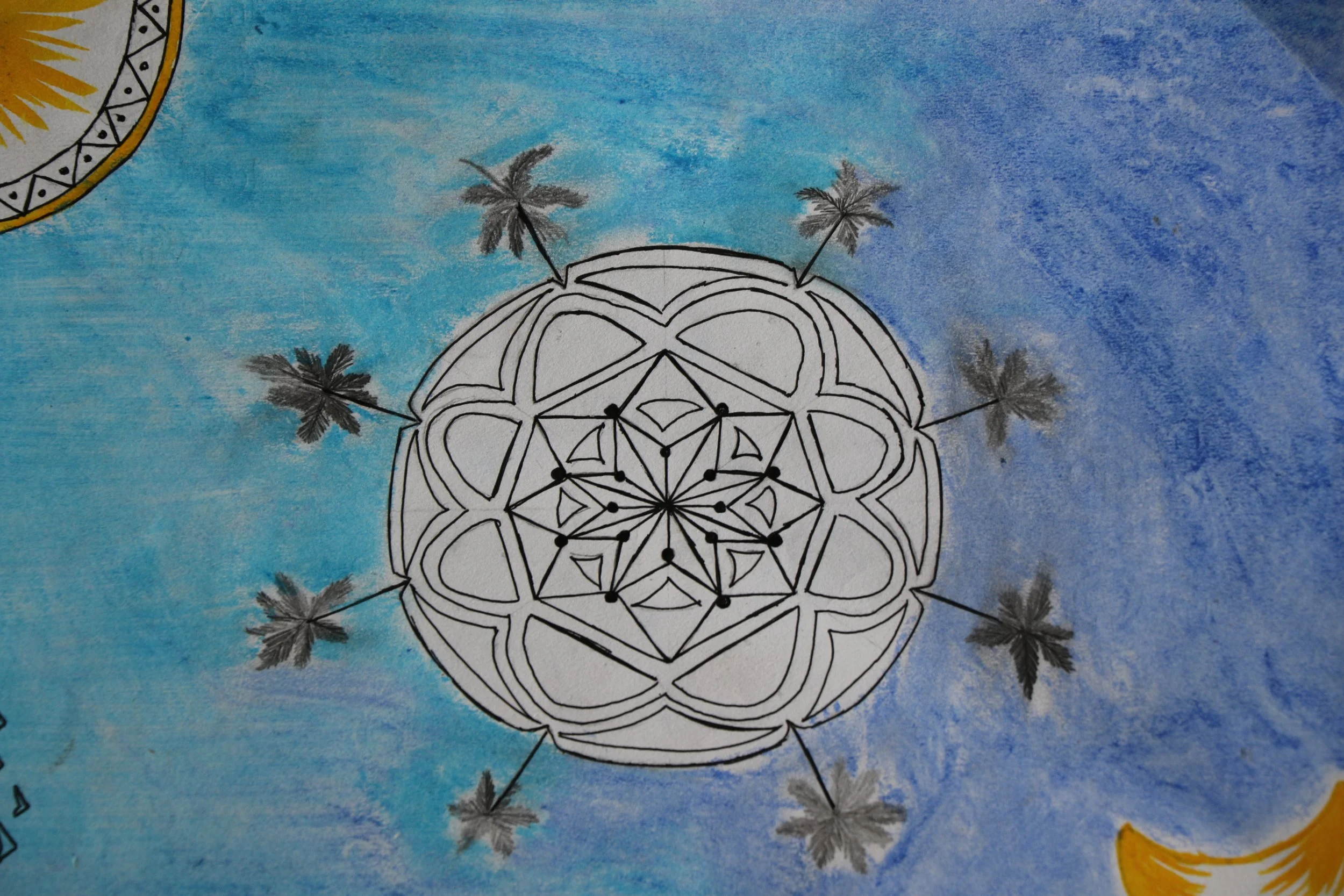
The Intermediary Years
The Intermediary years continue with exploration in the various areas in a wider but more specific way. Children are introduced to subdivisions in each subject. The curriculum provides opportunities to explore one’s curiosity, creativity, analytical skills, problem solving skills and an awareness of oneself and the surroundings.
This stage encompasses years 6 to 8 for children in the age groups of 11 years to 13 years. During these years, children are introduced to subdivisions of subjects and also interact with newer areas of learning. The children continue to learn through experiences and also get introduced to the skills of note making, becoming more active listeners, work in groups and take charge of their learning. At this stage, they are also introduced to summative assessment which also lays the stepping stone to different forms of assessments while also developing the skills to face formal examinations later. The ability to self assess and review one’s own work is also a skill that is developed. Children learn to plan their work and understand that one needs to develop resilience and set standards for themselves and observe how they are improving and growing every day.
Below is an overview of the various categories offered as part of the school curriculum.
Languages
Children continue their learning in the English language, now developing skills of analysis of language used across different types of texts, understanding to use of literary features to create impact and also becoming proficient in use of grammar and conventions. Language is understood clearly to be a medium of effective communication where one must try to learn it in its authenticity and completeness. Children are exposed to usage of language to suit certain audience and purposes and this again ties back to effective communication where we learn to communicate with a purpose in mind and with the intent of fulfilling the purpose to the best possible extent. At this stage children transition to the area of Linguistics as opposed to learning specific vernacular or foreign languages. Under Linguistics, children go through experiences and exploration of various languages, some of which may be absolutely new to them. The intent of introducing them to this variety is to help them connect with several languages and start developing the skills of and aptitude for learning different languages by themselves. Exposure is given through plays, movies, songs, practising dialect, tracing the history of the languages, their origin and many such other ways.
Computational Sciences
Under this category, children are introduced to different branches of Mathematics and Computer Science. The various categories in Mathematics like Arithmetic, Geometry, Algebra and Statistics are interwoven to enable the child to get an understanding and appreciation of a comprehensive range of mathematical principles, equations, functions, relationships and techniques. The student learns by exploration that is focused, in-depth and by applying the concepts to solve mathematical problems as well as developing approaches to problems with no clear-cut solution. Students also get an understanding of data handling, problem solving and critical reasoning skills in this learning process.
Natural Sciences
The curriculum is divided into Physics, Chemistry and Biology and children now get the opportunities to apply the science process skills they have developed thus far from their past years of learning. The focus also is on using scientific vocabulary to explain various observations and inferences. Children learn how to methodically carry our experiments and also record their observations in an organised way. and interaction. The formal learning process enables the child to develop skills of making estimates, assumptions, supporting arguments and drawing inferences.
Environmental Sciences is also treated as part of the science curriculum and in this category learning happens by spending time with nature and understanding the various aspects of nature. Travelling and exploring are important tools in this curriculum.
Humanities
Children continue their journey with History and Geography. This category is all about the world around us – past, present and future. It gives children the opportunity to understand the globe – the physical and political aspect, the universe and its components. The children engage in cosmic education where they understand interdependence and the contribution of every element in nature towards maintaining the balance in the universe. The curriculum also gives children understanding about one’s nation, the world, the timeline of events and the understanding of self in relation to the world. Children also get glimpses into aspects of Finance and Economics in broad ways as part of our Humanities curriculum in the Intermediary Years.
Research, Analysis, Synthesis and Perspectives (RASP)
We are living in a world where learning must not be confined or narrowly presented. We are part of this grand space that is extremely vast and hence diverse. Today we are global citizens and not just part of a country or a state. We are part of the large world where we learn from all the diversities and varied approaches to life and learning. In order to develop the thought of being part of a larger and broader space and to get an understanding of perspectives and other points of view. RASP aims at bringing perspectives to children and help them do research in a methodical way while developing the ability to identify the authenticity of information thus gathered, break down information gathered, categorise it and study it carefully to gain perspectives into an issue, statement or event. We are often clouded by prejudices and bias to such an extent that we understand things only from one angle. The RASP curriculum breaks this pattern and helps children understand that there are so many points of view for the same thought or action and one needs to be able to look at every problem or event from different angles thus developing interesting perspectives and newer learning opportunities.
Art Immersion
At Pramiti, Arts and Culture are integrated into the main curriculum. The offerings in this area will span across Music, Dance, Theatre, Art and Craft. The objective of the curriculum is to provide exposure to all areas to kindle interest and appreciation for the various forms in this age group.
Art is treated as a form of expression led by observation and criticality. True expression happens when an individual has the freedom to see, explore, think and translate one’s imagination towards an act of creation. The process of exploration is the learning experience. The child also develops an eye for detail and observation to critically appreciate one’s own work and thus sculpt it to his satisfaction.
Music is the essence of life and we absorb it sub-consciously from nature as well. The exposure to various forms of music is a way to unleash the unconscious absorption that happens with all of us.
Drama and dance make way for a whole new level of creative expression where the child gets to experiment and express a wide range of emotions, feelings, ideas and body movements.
Besides, Art transcends boundaries and allow the child to appreciate different cultures and traditions. Skill development and performance is a part of the process of learning and not the ultimate goal.
Life Sciences
This area encompasses Sports, Physical fitness and regime, Health and Nutrition. Being fit is an attitude in many ways and this can be developed if we start early very naturally. In the Intermediary Years, children are developing skills of playing specific areas of Sports as per their choice and what the school offers. The curriculum emphasises in not only developing skills and expertise but also developing the right attitude, team spirit, compassion, perseverance and higher thresholds. Healthy eating habits are promoted not just through preaching but also embodying a healthy menu in our kitchen and promoting eating native and seasonal.
Culture
This stage of children’s lives is very crucial as this is the time when children start developing images of self, people around them and the world at large. They start seeking an identity for themselves and in the medley of finding oneself, they have a lot of confusion, indulge in various discussions, thoughts and acts out of curiosity. They want to know and talk about everything that is “adult” and perhaps presented by adults as taboo for them. The role of the Culture Periods is to open room for dialogues, introspection, discussion, interactions and questioning. We believe that there is no better tool than open communication to help children deal with inner conflicts and fears. While there perhaps can never be answers to all questions or a single road leading to solutions to problems, there is definitely the opportunity to explore consciously with support and hand holding. These sessions greatly promote that.
Self and Community
Co-existence and collaboration is one the bedrocks of our program. The child learns to work independently and in a group, understand relationships and appreciate the togetherness and dynamics in a community. In the process, the child understands various aspects of communication, presentation and positive interaction.
The child gets exposure in the form of projects, field trips and work experience trips. Children work with people from various strata of society and understand the dynamics of communal living and also experience dignity of labour.

